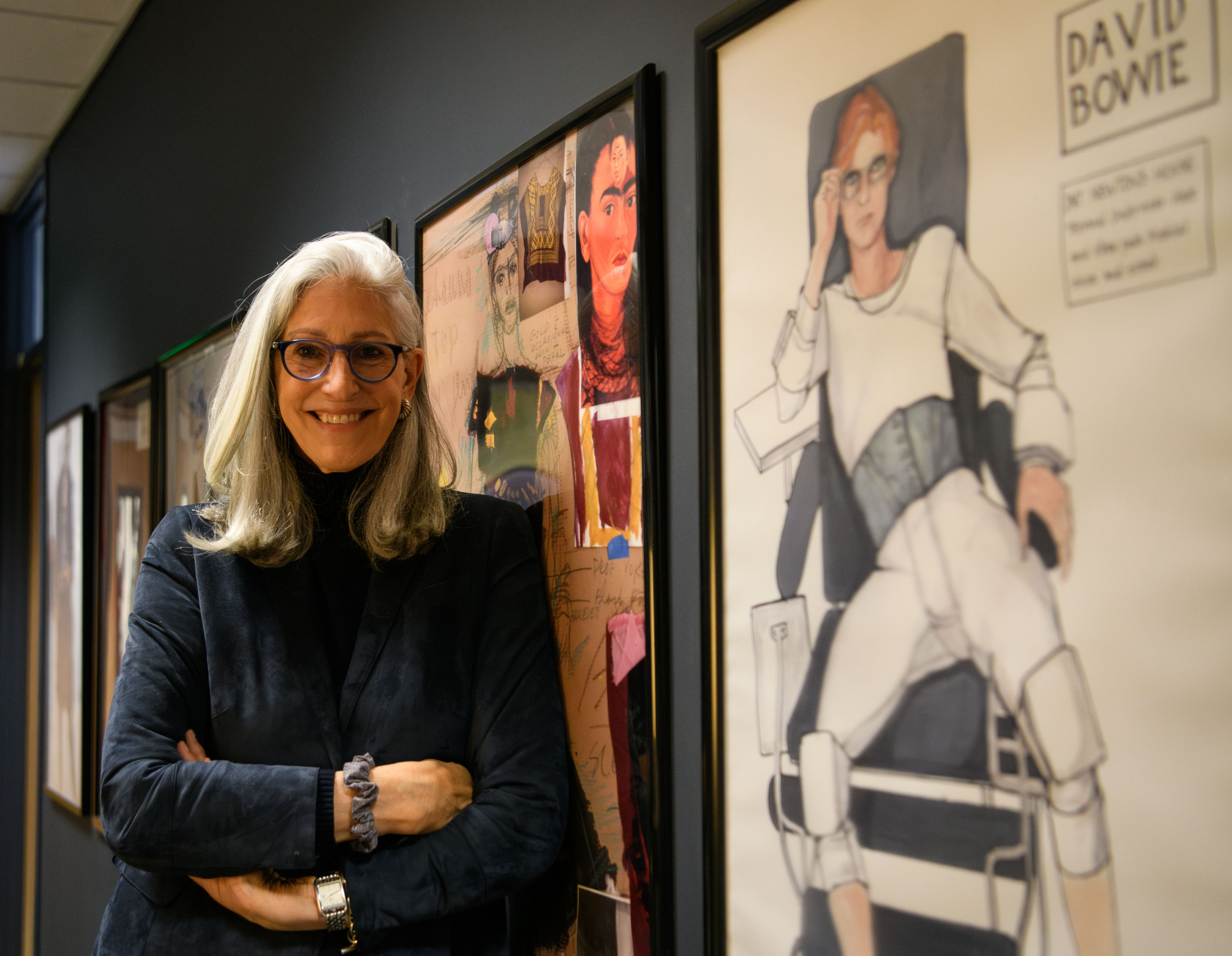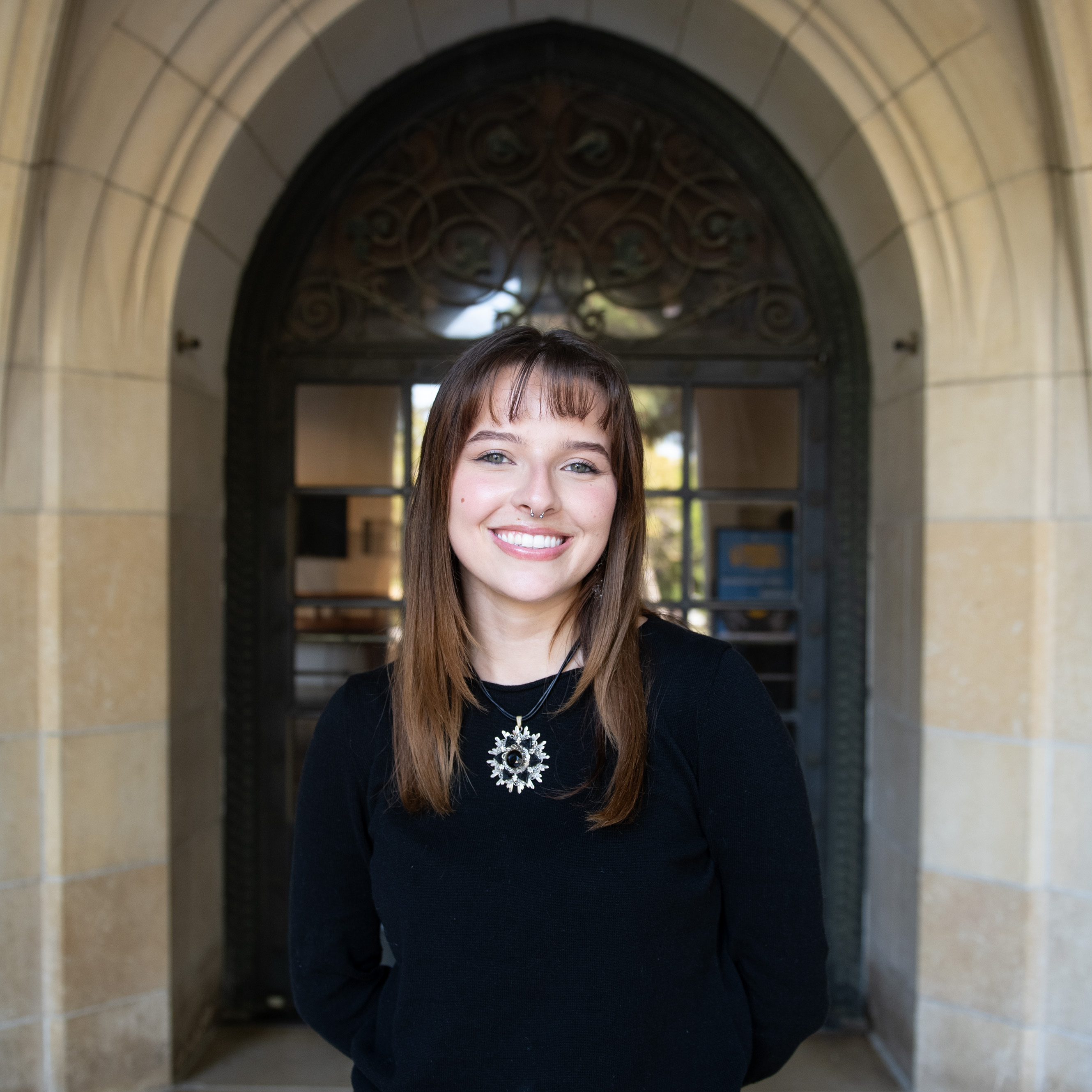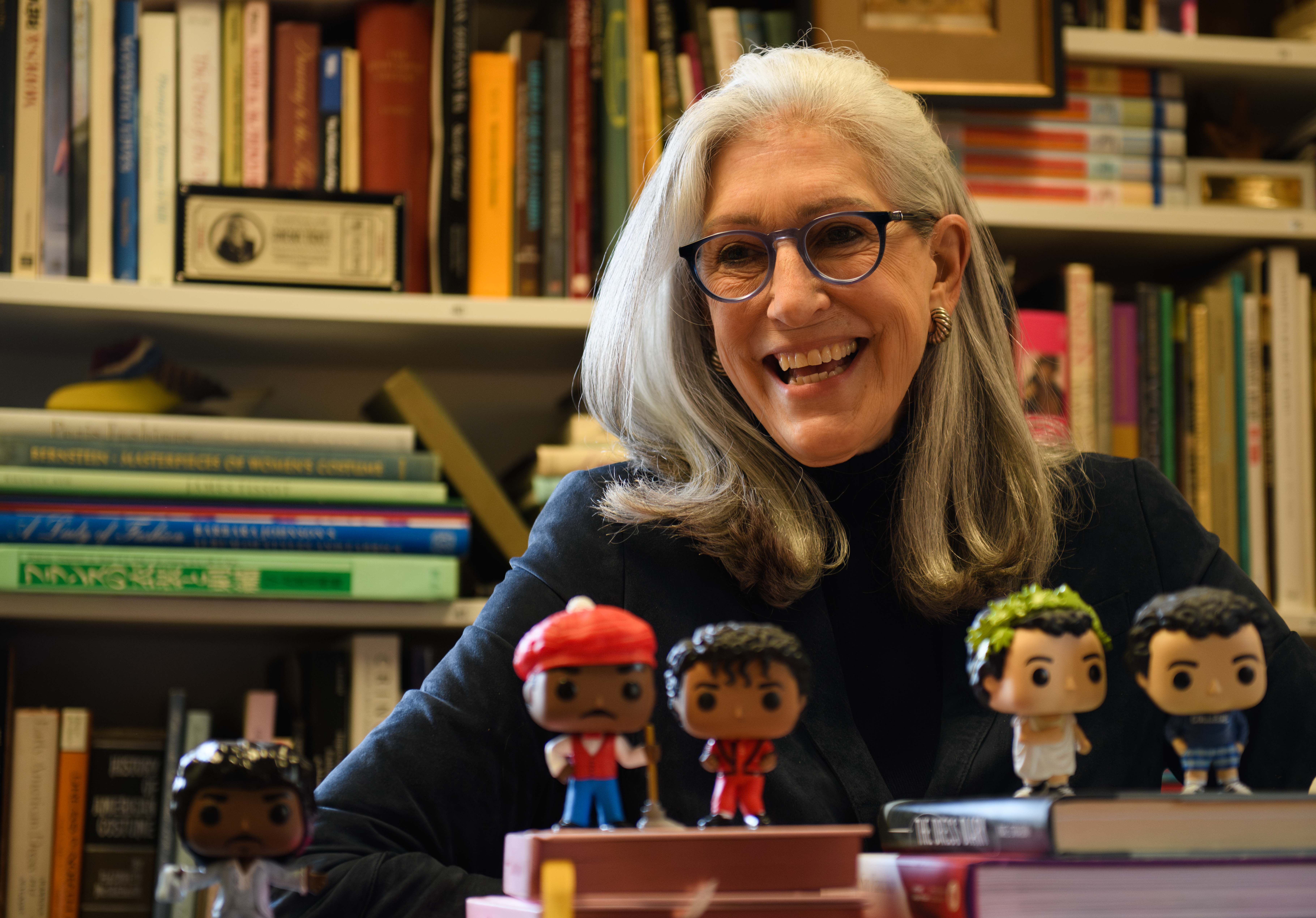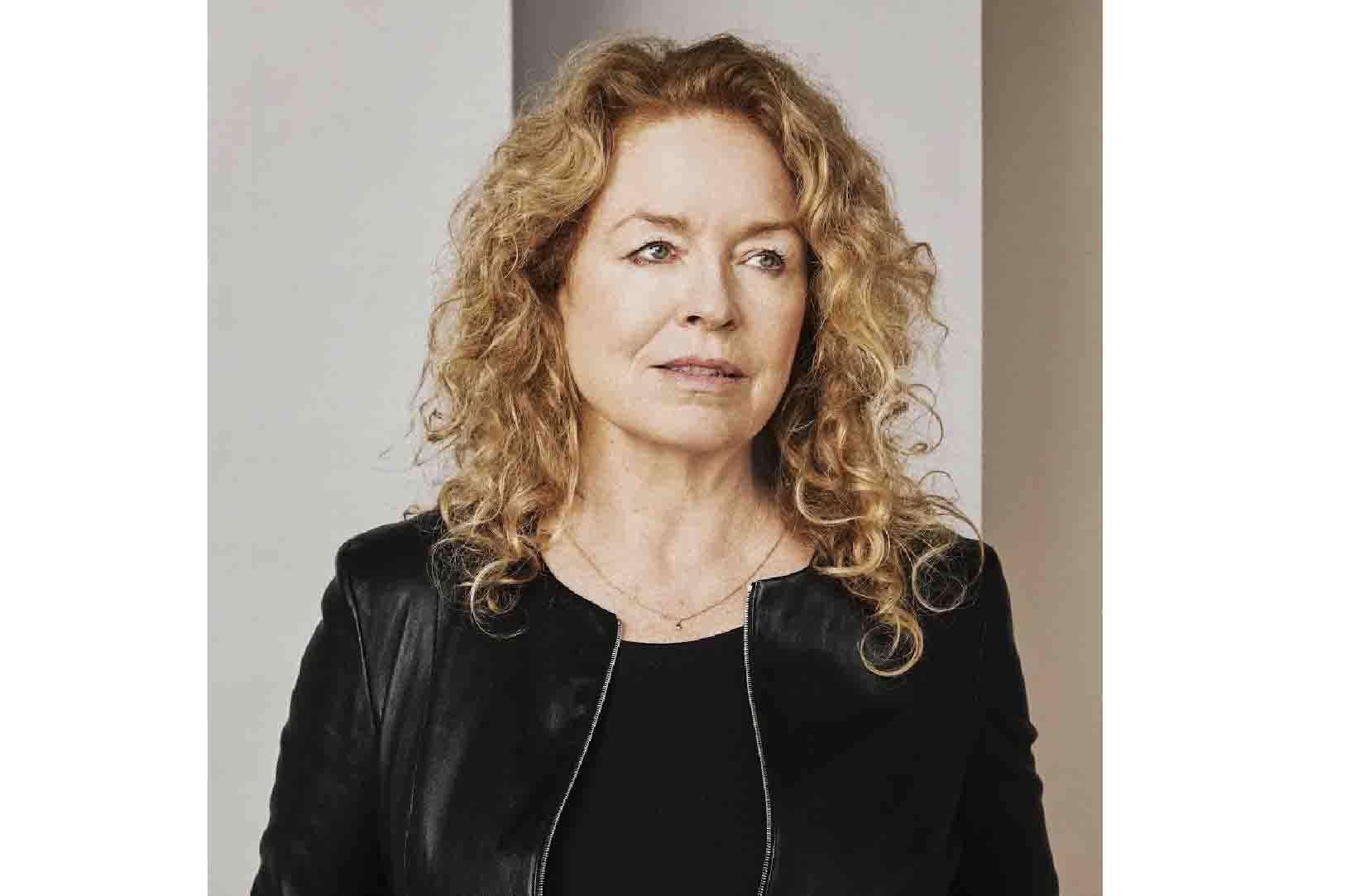Q&A: Costume designer Deborah Nadoolman Landis talks career, impact of work

Deborah Nadoolman Landis smiles at the camera in a black blazer and turtleneck and leans against a wall of artistic posters. The UCLA Distinguished Professor is a renowned American costume designer. (Leydi Cris Cobo Cordon/Daily Bruin senior staff)

By Natalie Ralston
Dec. 5, 2024 5:28 p.m.
This post was updated Jan. 16 at 8:58 p.m.
Piece by piece, Deborah Nadoolman Landis is curating culture through cloth.
From designing the costumes for iconic films such as “National Lampoon’s Animal House” and “The Blues Brothers” to earning an Academy Award nomination for her work on “Coming to America,” Landis has tailored her niche for the art of costuming while pursuing a professional career in academia. Some of the UCLA distinguished professor’s work now resides in museums across the United States, including the Smithsonian Museum of American History and the National Museum of African American History and Culture.
Landis spoke with the Daily Bruin’s Natalie Ralston about the behind-the-scenes of her design process and the significant role of academia in her career.
This interview has been edited for length and clarity.
[Related: Q&A: Bernardo Britto discusses influences, themes of recently released ‘Omni Loop’]
Daily Bruin: Your costume designs in films such as in “Indiana Jones and the Raiders of the Lost Ark” or “Coming to America” have become cultural icons. How do you approach creating costumes that resonate with audiences across generations?
Landis: Costume designers don’t make the icons. If the movie resonates with the audience, we fall madly in love with the people on screen. I mean, think about it – icons are made by us, by the audience. Maybe I do add to the mix of why the audience falls in love with the characters, but I think that it’s the entire package. It’s the screenplay, it’s the actors, it’s the direction and then finally, it’s the costume.
It’s a costume that you and I can go out and buy or find so that on Halloween we can dress up like Indiana Jones, or like the Blues Brothers or like Michael Jackson. It’s the costume that then makes you feel like that character. So I play a part in those icons, but I don’t think it’s just the costume. I really believe it’s that moment where you see the movie and you fall in love with the person on screen.
DB: With your contributions to film and music videos like Michael Jackson’s “Thriller,” how do you adapt your creative process for different mediums?
DNL: I believe that it’s all the expression and interpretation of the story. Whether it’s film or a television series or a music video, it’s just a matter of length, but it’s an interpretation of story. And of course, costume and performance are really the same thing, because what do we do? We’re really giving the actor a second skin, something to interact with. So my feeling is, whatever the medium, whether it’s theater, whether it’s film, whether it’s television, whether it’s a music video, whether it’s gaming, I think that those characters have to be able to engage with our imagination, and then we have to give ourselves over to it.

DB: What role do you think storytelling plays in your design process?
DNL: I think that most people understand the movies or television series as visual arts, but they’re really also literary pursuits, because costume designers don’t need to know how to sew, we need to know how to read. The first thing a costume designer has to do is read and interpret the screenplay. We analyze that screenplay, and we have to be such good readers that we read that screenplay, and then we have a discussion with the director. Because, as you can imagine, if the same screenplay was going to be directed by Steven Spielberg or Wes Anderson or Tim Burton, those would not be the same film. So first we read the story, then we listen to the director’s vision, then we bring our own interpretation to the characters in the story. It’s really much more about these conversations than it is about the costumes, because we have to figure out who the people are in this story, and then we have to help bring them to life.
DB: As a previous president of the Costume Designers Guild and a governor of the Academy of Motion Picture Arts and Sciences, how have you advocated for costume designers recognition and rights in the film industry?
DNL: When I became president of the Costume Designers Guild, it was the first time in my life I really read our union contract, and I sincerely could not believe how little money we made in comparison to production designers, and it was so disappointing. I had never thought about it before, because most costume designers are freelance, and we’re quite myopic. We’re just thinking about our next job.
After months and months and even years of sleepless nights, it occurred to me that costume design is about 87% female. Production design is about 87% male, and it was no surprise, really, that they were making 30% more on the general agreement than big Hollywood contracts. After 20 years of fighting this year, the Costume Designers Guild received equity to production designers. It took a long time, but we got suffrage. I hope it continues, and I think women have to constantly make space for themselves. Costume design was always considered just clothes, and in fact, we’re creating the people in the story.
[Related: Q&A: ‘Turning Red’ star Rosalie Chiang widens lens of Asian representation]
DB: With an M.F.A. from UCLA and a Ph.D. in design history, how has your academic background shaped your perspective on costume design?
DNL: I think I have the best of both, because an M.F.A. is really the hands and the Ph.D. is really the head, so it’s the head and the hands. And like every good Gemini, I’m completely bifurcated. I think that very much I was blessed with a good brain and thinking and analyzing and talking and worrying about deconstructing the people in the film and the story – It’s all part of being a really good costume designer. I love teaching both, and I love emphasizing both to my students. You can’t design without doing research.



